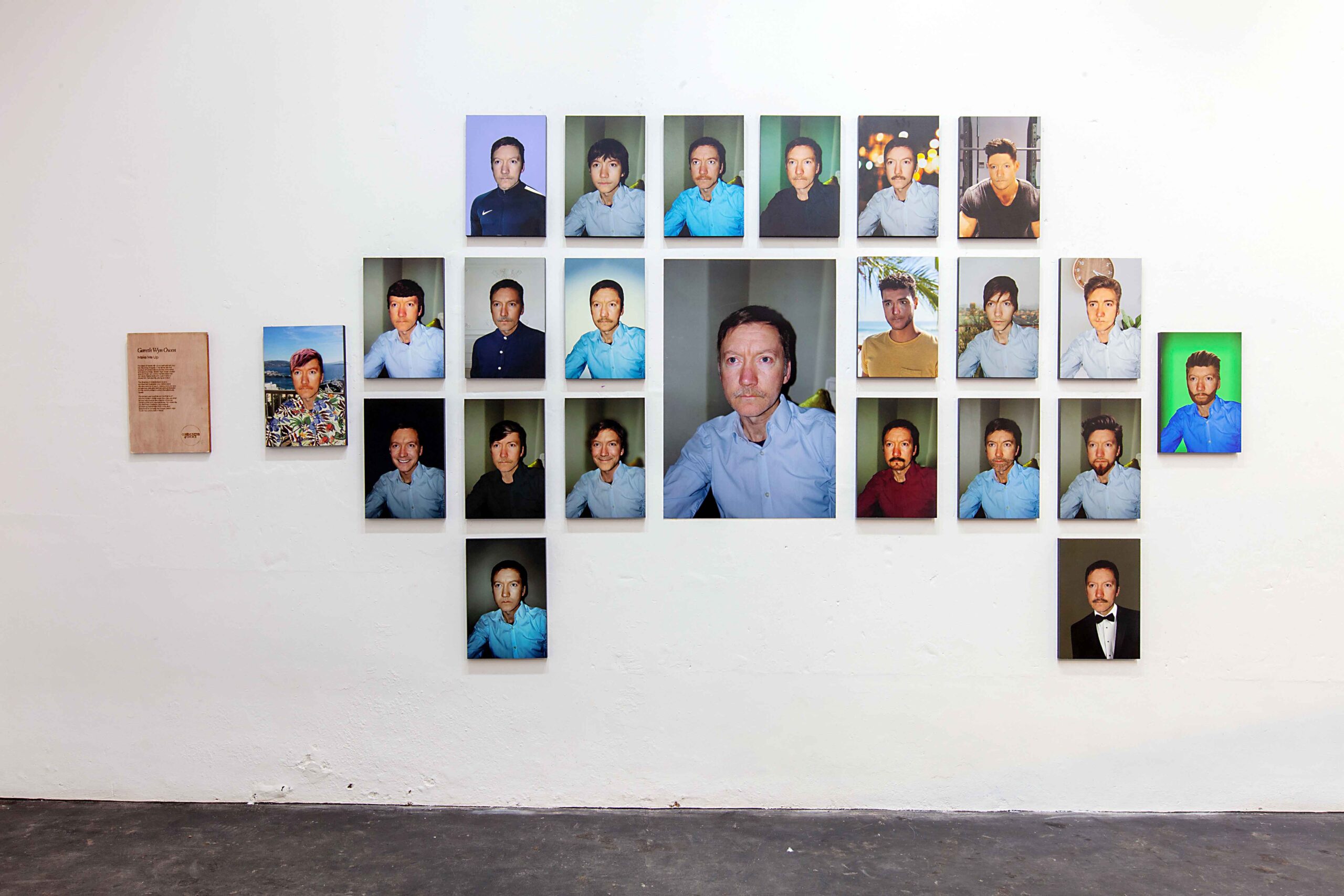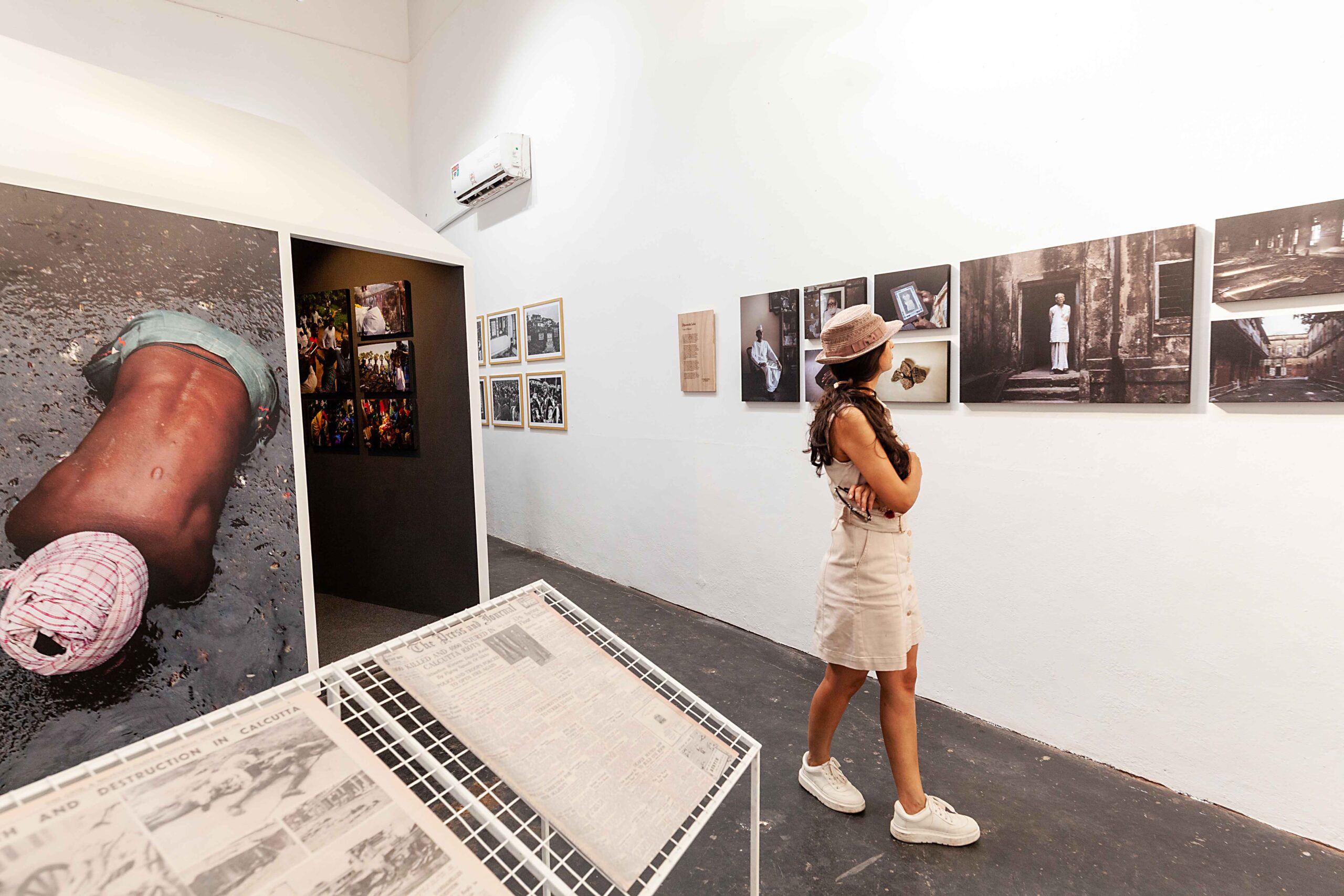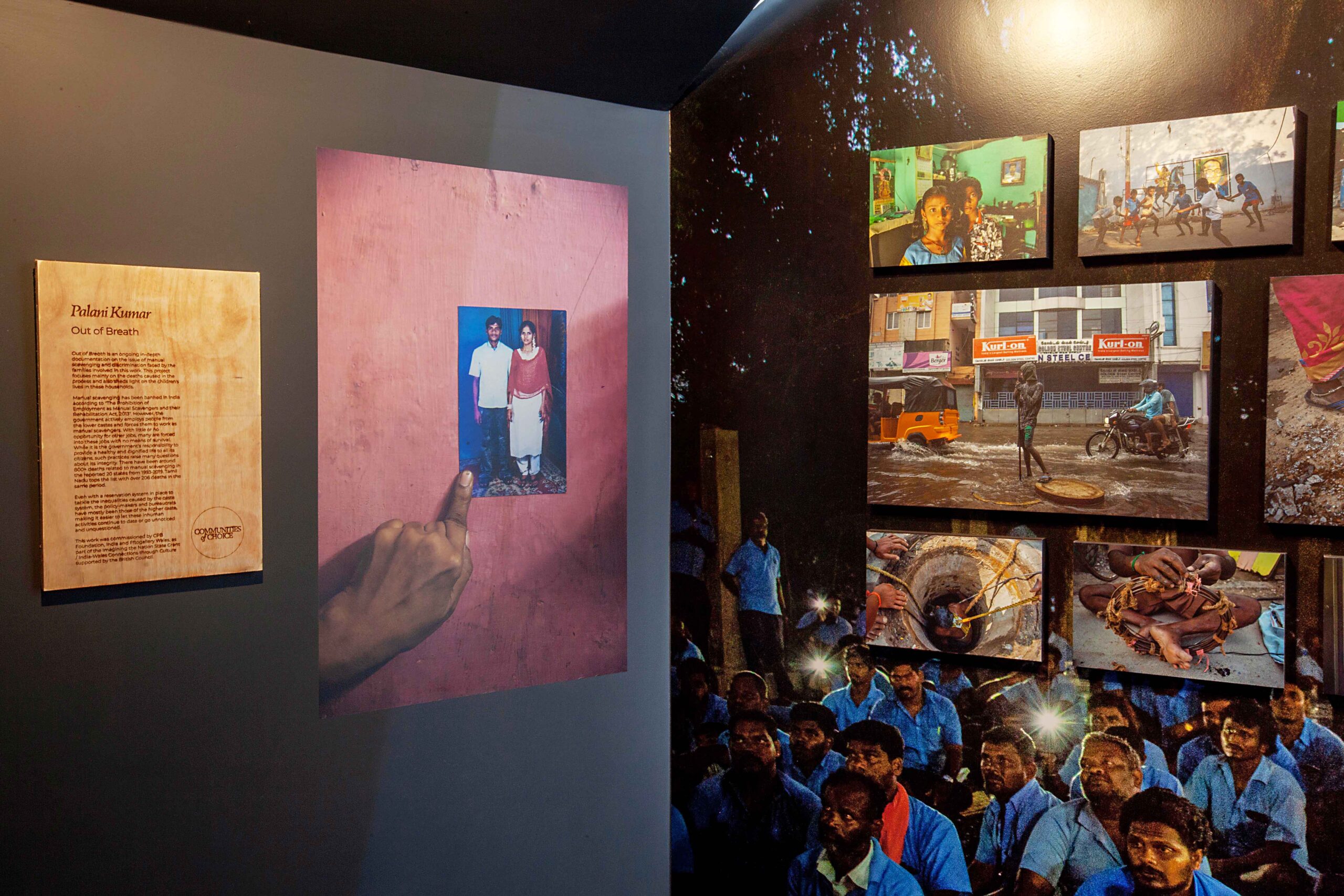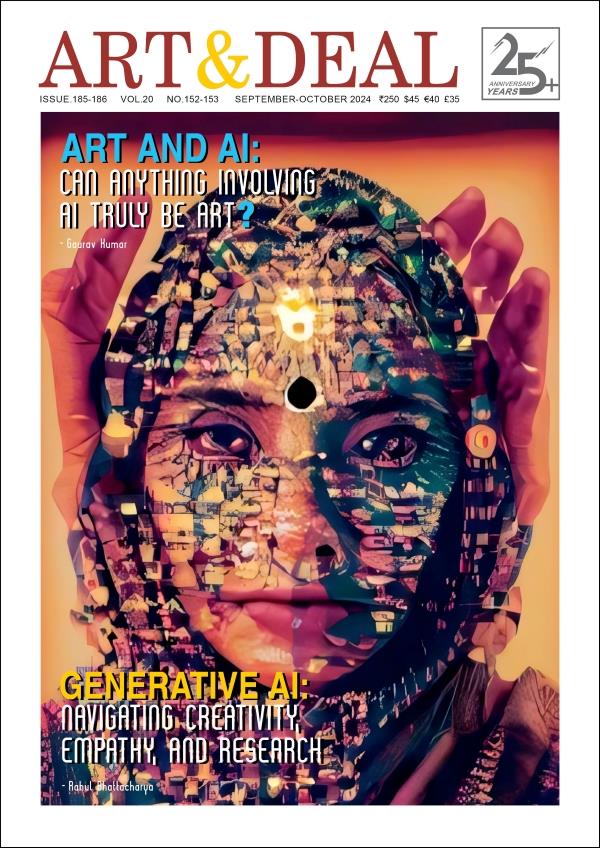
Credit: Chennai Photo Biennale. Location: TKM Warehouse,
Mattancherry. Kochi Muziris Biennale.
Community is an influential idea, and the individual plays a seed of that notion; at the same time, where we come from and what we are, is a shaping question of many things, including philosophy, art and religion. “Who am I? Where do I belong? Do I belong to A community? Do I belong to many?” are some essential questions asked by ‘Communities of Choice’, a collaborative show by Chennai Photo Biennale Foundation, India and Ffotogallery (Wales), at the Kochi Muziris Biennale, supported by the India-UK Together Season of Culture Program.
In our socio-political scenario, this show asks us to ponder whether belonging to a community is crucial for our survival and identity or if we have the choice to create and build communities that are different from those we were born ‘into’. Moving forward in many navigating challenges that ‘we’ create or cause of the creation in the last centuries. ‘We’ are the focus of these shows in different terms and necessities, while ‘we’ are part of a web of entwined communities in diverse locales, periods and geography. Artists from India and Wales portray various stories and realities in lens-based forms that offer narratives from our contemporary life and reflect on past legacies in thoughtful, humorous, and philosophical ways, using sound, text and illustrations to understand the varying intimacies shared within communities.
Ambedkarite Camera
Manual scavenging was banned in India in 2013, but hundreds of people die yearly in manholes because of our ignorance and indifference. Tamil Nadu-based documentary photographer and activist Palani Kumar produces a visual portrayal of how the caste system treats the Dalits as a manual scavenging community through his ‘Ambedkarite Camera’, which visually represents our ‘civilised’ culture’s hypocrisy and brutality. 800+ deaths related to manual scavenging were reported in 20 states from 1993 to 2019.
If we follow the project concepts’ lead, where we are, where we reach and how we articulate ourselves in contemporary society? Our communities are built upon various layers of class and caste, a diverse space of myriad identities and dramatic social-political changes that occurred in our society. But, these elements embodied some existential questions about the lower caste community and lower-class people. Palani Kumar uses the camera to document unrepresented identities and bodies of people who worked for a ‘hygienic society’. In this show, we encountered the incredible Indian tale of inhumane practices that followed for many years and continue to be contemporary social routines.
Who maintains ‘your\our’ urban\rural life hygiene? Who cleans our waste? How do ‘we’ belong to a community as perfect humans in our clean society while we are not cleaning our waste and drainage? This artwork asks questions from below the ground, connecting the realities that glare at us. Ambedkar’s philosophy is rooted in the artist’s life. This work speaks loudly about the social inequality prevailing in India.
The pain of memory
Indian visual artist Dipanwita Saha’s Trail Of Blood and the British-Chilean artist, Sebastián Bustamante’s ‘The Autumn, are two works in the Communities of Choice Showcase that narrate an entirely different story from distant landscapes related to the painful memory of violence.
Sebastian Bustamante’s parents were exiled from Chile during General Augusto Pinochet’s dictatorship. Fantasies of a more egalitarian society ended in Chile when Pinochet seized power, and economic violence mirrored widespread state savagery, including kidnapping, arbitrary arrests, torture, executions, and enforced disappearances. The artist has exhibited materials belonging to the interstitial space of exile. He captured many older women encountered in Chile, such as the relatives of the disappeared, who experienced a different liminality, unable to bury and mourn their missing, whose fate is still unknown 30 years after the dictatorship ended. Dictatorship regimes change people’s and countries’ lives forever, and the collective memory of the brutal period haunts people’s imagination.
‘The struggle of man against power is the struggle of memory against forgetting’; Milan Kundera writes about memory in his book ‘The Book of Laughter and Forgetting. The 1946 Calcutta Killings are the focus of Saha’s project. People still carry an unforgettable part of history and cartographies of violence in their memory. Saha narrates ordinary people’s oral histories and archives to exhibit this horrible past in a visual expression of that time. 1946 incident segregates the city’s life forever, and artists claim that a fine marginal hatred attitude can be found anywhere in the town, from inter-religious marriage to renting a house. Polarisation is the main agenda of today’s Indian political situation and is deeply rooted in our country and people’s vein of memory—partition and the communal violence that followed haunt people’s imagination and sense of identity to still now.
Space and Identity

Mattancherry. Kochi Muziris Biennale. Image Credit: Kochi
Muziris Biennale. ”Women seeing Dipanwita Saha’s work.”
Identity of the space and the individual is the significant focus of the work exhibited in this show, especially in the works of Welsh artist Gareth Wyn Owen, Susan Matthews and Tessa Holly, Huw Alden Davies, and Indian visual artists Rishi Kochhar and Kashish Kochhar.
Gareth raises questions about Identity in a precise way to connect people on Fiverr (an online marketplace that connects freelancers with customers) via a self-portrait of the artist. Gareth invites collaborations from across continents and communities to reproduce a new self of the artist that fits in the contemporary social realities. Artists want to make him more ‘handsome, young and cool’. People respond to it quickly, and the artist gets a new identity in each portrait, influenced by Photoshoppers from diverse socio-cultural backgrounds worldwide. This project unfolds the idea of Identity through various interpretations and approaches that illustrate how youth, beauty and handsome are subjectively and culturally defined in the online space. Human Identity is in flux, a flow from one point to another as one person to another.
The artist commissioned this work to over 40 freelancers worldwide from the UK, India, Australia, Pakistan, the USA, Finland, the UAE, and many others.
Wales-based visual artists Susan Mathews and Tessa Holly created ‘The Red Cave‘ to tell a narrative of a town in North Wales bearing the longest place name in Europe. -‘Llanfairpwllgwyngyllgogerychwyrndrobwllllantysiliogogogoch’ translated from Welsh to English, is ‘St Mary’s Church in the Hollow of the White Hazel Near to the Rapid Whirlpool of Llantysilio of the Red Cave’. In this project, the artist explores communication and how it varies across communities. Drawing from British anthropologist Robin Dunbar’s relationships theory, we can maintain stable connections with a finite number of people. He argues with a diagram that tells the smallest circle represents a fewer number who are closest, and the largest circle is a group of acquaintances; these circles create a person’s community. The artists use this theory to understand their communities in-depth; they conduct a test of each relationship. Which circle responds to it more thoroughly than the other is the main focus of the test; smaller circle people win, and artists bring all these ideas in a single phrase and a video work that is being exhibited at the Communities of Choice Showcase.
‘Xennial: Dreaming in colour’ is a video project of Welsh artist Huw Alden Davies that portrays lesser-explored and culturally rich communities in Wales. This video project narrates a metamodernist-era community and the ‘old’ generations in a single point that tells a story of the people’s life-changing experience in a place formerly associated with coal mining.
Our identities are formed from home, but what is home when it means a constant shift every few years? The artist’s focus of this project is to create a visual record of the self, and selfhood is mediated by the geographies, spaces and objects, accompanying it with nostalgia and memory of home.
Looking at space as a connection to the community is the focus of Kashish Kochhar’s work, ‘Space as a Catalyst’, which reflects on how a public space transforms the idea of space in time in the context of the people who consume that space. Manek Chowk, a busy marketplace in Ahmedabad, Gujarat, is the documented space in this project. Space can objectively be seen as multiple layers of segregated typology, and we can read it through the lens of theorists like Henri Lefebvre and Edward W Soja. Artists create visual documentation and make an understanding of space through the theoretical frameworks of these scholars. Spatial identity is connected with human agency and its functionality. Each layer tells different stories and tales, like encroachments, people, buildings, transportation and other activities.
Indian visual artists Paribartana Mohanty’s A Fate’s Brief Memoir and Tarun Bhartiya’s Niam/Faith/Hynñiewtrep represent distinct tales from different locations in India, communities, and their lives as the soul of the inquiries.
Environmental disasters and the fisherman’s displacement from their homeland are the main focus of Mohanty’s project. Nolias fisher folks (a unique marine fisher community classified as ‘scheduled-caste’ living on the coast of the Bay of Bengal in Odisha) became climate migrants within the last fifteen years of being displaced from the seashore to the inner land. How has climate change affected a community? It is where home becomes a temporal concept, and the transits encircle inter-state borders, transportation, rehabilitation/ shelter homes, and so on. Continued migrations affect the Nolias’ culture and indigenous practices, reflecting the frail human condition of homelessness or hopelessness. The disappearance of the Nolias community from the coastline through lenticular prints and a video work leaves the audience haunted and intrigued.
Tarun Bharatiya’s work raises questions about the ontology of religious belief and the engagement of ideas related to faith and nation-making amongst the Khasi-Jaintia people and the Indian nation-state. Christianity and the conversion of Khasi tribal people to Christianity are encounters between influential missionaries and helpless natives. India has become a pluralist nation worldwide, and Christianity and the diverse nature of faith are the post-colonial benchmarks in a contemporary context. Questions of faith become the questions of the self of the people and space in historical chronologies.
This show is a reflection on the various notions of ‘community’; artists and projects selected from both countries with different cultural landscapes and social and political inclinations present community and our choices through a maze of perspectives at this showcase at the TKM Warehouse, Kochi Muziris Biennale, on till 10 April.
Read More>> Please Subscribe our Physical Magazine
